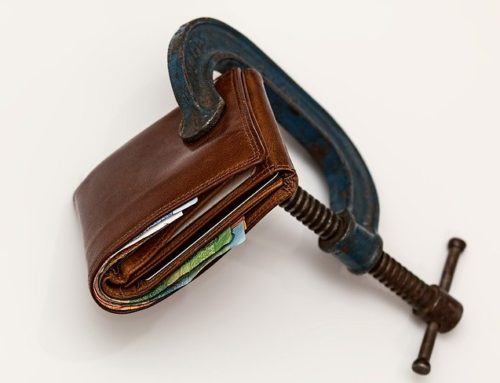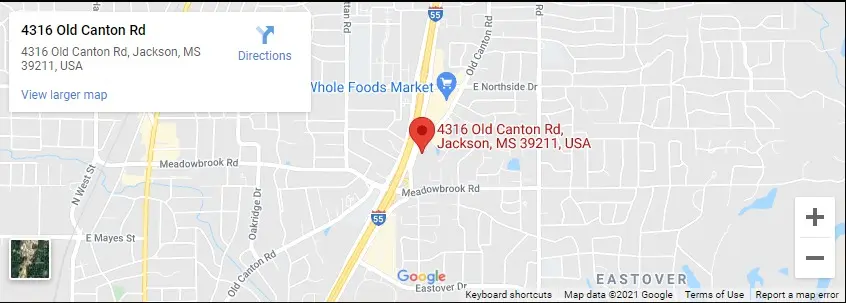Budgeting 101 in Jackson, Mississippi
Budgeting may not sound glamorous, but it means having a plan for every dollar that you bring in and then sticking to it. Some people find budgets constraining, but a little self-control now can keep circumstances from controlling you later.
A personalized budget requires some math, saving, and positive, long-term spending habits. Fortunately, with these simple steps, you can build one that works for you in no time.
So, grab your bank and credit card statements, scrounge up your recent pay stubs, and dig out that rusty calculator. (A pencil and paper or computer will come in handy, too.) Read up on the steps and set up a budget that works for you.
Step 1: Determine your income and expenses
The first step is figuring out how much you bring home every month after taxes. Don’t leave anything out – your W-2 and side hustle income, government payments, and child support or alimony all count. (If you plan to keep deducting your 401(k) or health insurance premiums straight from your paycheck, subtract those from your income.)
Next, you’ll want to determine both your fixed and variable necessary expenses. Fixed expenses are the ones that don’t change every month, like your rent, car payments, internet bill, and insurance.
Your variable payments can be necessities, but may fluctuate every month. Examples include your grocery bill, utilities, health and hygiene, and transportation costs. (To make budgeting easier, you may want to average your variable costs over the past 3-6 months.)
Look at your discretionary spending.
You’ll want to look at any adjustable expenses that you have, such as entertainment, junk food and eating out, and monthly subscriptions. It’s likely that you won’t spend the exact same amount every month; if so, using a monthly average will be fine.
Compare your income to your expenses.
Now that you have your numbers, it’s time to look at your cash flow. Subtract your monthly expenses (both necessary and discretionary) from your income. If you come up positive, that means you make more than you spend, which is great! But if you’re in the red, it’s time to find where you can start saving.
Step 2: Build your budget from the ground up
Now that you know what you make versus what you spend, you can start building your budget from the ground up.
Start with necessary expenses.
First off, build your necessary expenses into your budget first, both variable and fixed. These are the items you need to live on – so they should be a priority.
However, if you’re living paycheck to paycheck, you may need to make some tough decisions, such as moving to cheaper housing or finding a new job.
Prioritize your savings.
A big part of budgeting is deciding what’s most important to you (after your needs are taken care of). But if you don’t have savings goals in mind, now’s the time to set some. For instance, you may want to:
-
Build an emergency fund
-
Buy a new house or car
-
Save for retirement
-
Build up your “fun fund”
Whatever you prioritize, be sure to set a timeline. Then, build that schedule and your monthly savings goals into your budget. (Typically, experts recommend saving around 10-20% of your monthly income. But if you can’t afford that much, save what you can, when you can.)
Set aside extra money to pay off debts
If you’re carrying a lot of debt, make that a priority. The faster you pay off your debts, the faster you can free up your income. (Plus, you’ll save tons on interest payments over the years.)
Let go of the wants, focus on the needs
Even if you come up positive every month, chances are, you’re spending money on things you don’t need. Take some time to decide what’s important and what you can do without, be it a magazine subscription you don’t read or too many streaming subscriptions.
You can also cut down expenses with a few minor lifestyle changes. For instance, switching insurance, rotating streaming subscriptions, or cooking at home can save you money without upending your life.
That said, don’t forget that you can make big changes, too. If moving to a cheaper apartment or finding a roommate will slash your rent in half, that will save significantly more.
Step 3: Consider these pro tips
Building a budget is pretty simple on paper – but it takes dedication, time, and effort to start seeing results.
Consider a tried-and-true budgeting method
If you’re not comfortable building your own budget, you can try a budgeting plan. One popular method is the 50-30-20 budget, where you put:
- 50% of your income toward needs, like rent and food
- 30% of your income toward wants, like entertainment
- 20% of your income toward retirement, savings, and debt repayment
Of course, this is just a framework to help you design your budget. If you have larger debts, a smaller income, or aren’t fond of a night on the town, you can tweak these numbers to suit your needs.
Opt for a budgeting app
If you’re disorganized (or hyper-organized), you might try a budgeting app to help you map your finances. Plus, many apps alert you of upcoming payments, finance charges, and even credit score changes.
Automate your payments and savings
Automating your monthly bill payments and savings can help you avoid late charges and save for your future in one go. Plus, if you make these payments on payday, you won’t run the risk of spending money that you could put toward other needs.
Don’t forget to revisit your budget.
Your income, expenses, and goals will change – and so should your budget. On a regular basis, perhaps every few months, take a few minutes to check in with your budget. Make sure you’re on track to meet your goals and tweak whatever makes sense.
Learn from the professionals.
Our attorneys at The Rollins Law Firm are committed to helping you get out of a financial rut. Call our office today for a free consultation.








Connect with Us